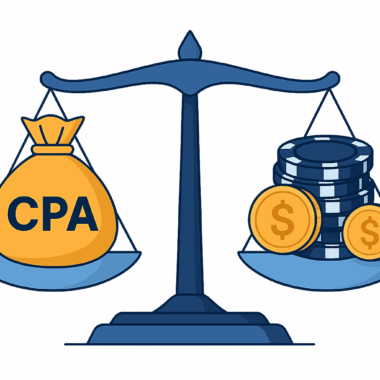

Affiliate Payout Models in Online Gambling: CPA vs. Revenue Share

Content:
- Overview of Affiliate Payout Models in Online Gambling
- What Is the CPA Model and How It Works
- Advantages and Disadvantages of CPA
- What Is the Revenue Share Model and How It Works
- Advantages and Disadvantages of Revenue Share
- CPA vs. Revenue Share: Key Differences
- Hybrid and Tiered Models: Combining Both Worlds
- Choosing the Right Model for Your Affiliate Strategy
- Conclusion
- FAQ
Affiliate marketing has long been the backbone of growth for online casinos and sportsbooks. In 2025, as competition intensifies and regulations evolve, the choice of payout model becomes a decisive factor for both affiliates and operators. Understanding how commissions are structured allows stakeholders to balance profitability, risk, and scalability. Modern partnerships are increasingly supported by advanced igaming affiliate software that ensures transparent tracking, accurate reporting, and automated payments.
Among the various payout systems used in the iGaming industry, two models dominate: Cost Per Acquisition (CPA) and Revenue Share. Each offers distinct advantages depending on business goals, traffic quality, and operational strategy. This article examines the mechanics, benefits, and limitations of both CPA and RevShare models, helping affiliates and operators make informed decisions in a highly competitive environment.
Overview of Affiliate Payout Models in Online Gambling
Affiliate payout models define how partners are compensated for referring players to gambling operators. These models are performance-based, meaning affiliates earn income only when referred users complete qualifying actions—such as registering, depositing, or wagering. This structure aligns affiliate incentives with operator success, creating a mutually beneficial ecosystem.
While CPA and Revenue Share remain the industry standards, other variations such as Hybrid, Tiered, and Dynamic models also exist. Hybrid programs, for example, combine upfront CPA payments with long-term revenue share earnings, offering a balance of cash flow and recurring income. Understanding the financial implications of each payout structure is crucial for long-term sustainability in the affiliate business.
What Is the CPA Model and How It Works
The Cost Per Acquisition (CPA) model is a fixed-payment structure where affiliates receive a predetermined fee for every qualified player they refer. A player typically qualifies once they register, make a first deposit, or fulfill other conditions set by the operator. This model offers predictability, as affiliates know exactly how much they earn per acquisition.
CPA is often used by operators seeking rapid user acquisition or those running performance-driven campaigns. Payments range widely depending on target markets, player value, and regulatory environment—often between $50 and $400 per player. Tracking and validation are handled through affiliate software that monitors clicks, registrations, and deposit confirmations in real time.
Advantages and Disadvantages of CPA
The CPA model appeals to affiliates seeking immediate returns and minimal exposure to long-term fluctuations. Its fixed-payment nature makes it ideal for paid advertising, social media traffic, and lead generation campaigns where volume outweighs retention.
However, CPA is not without limitations. Since affiliates earn only once per acquisition, long-term value from loyal players is lost. Moreover, CPA programs can attract fraudulent or low-quality traffic, prompting operators to implement strict validation criteria.
Key pros and cons of CPA include:
- Predictable and upfront revenue stream for affiliates.
- Minimal exposure to operator performance fluctuations.
- No long-term residual income from active players.
- Higher risk of short-term traffic manipulation or fraud.
What Is the Revenue Share Model and How It Works
The Revenue Share (RevShare) model rewards affiliates with a percentage of the net revenue generated by referred players. Instead of receiving a one-time payment, affiliates earn recurring commissions for the lifetime of the player’s activity. This model aligns the interests of both parties, encouraging affiliates to attract high-value, loyal customers.
RevShare payouts are calculated monthly based on player losses minus costs such as bonuses, chargebacks, or processing fees. Rates typically range from 25% to 50%, depending on traffic quality and operator agreements. While income can fluctuate, affiliates benefit from compounding earnings as their player base grows.
Advantages and Disadvantages of Revenue Share
Revenue Share remains the preferred model among experienced affiliates focused on long-term profitability. It provides a sustainable income stream that can scale with player retention and lifetime value. For operators, this approach ensures performance accountability—payouts occur only when players generate real revenue.
However, RevShare introduces variability and delayed payment cycles. Affiliates dependent on consistent cash flow may struggle during periods of low activity. Additionally, program transparency and reporting accuracy are critical, as discrepancies can affect trust and earnings potential.
Main pros and cons of Revenue Share include:
- Long-term passive income potential tied to player activity.
- Strong alignment of interests between affiliate and operator.
- Variable monthly income subject to player behavior.
- Dependence on accurate tracking and transparent reporting.
CPA vs. Revenue Share: Key Differences
While both models reward affiliates for performance, they cater to different business strategies. CPA focuses on volume and short-term gains, while Revenue Share emphasizes retention and recurring profitability. Choosing the right model depends on traffic type, conversion quality, and financial objectives.
The table below summarizes the main differences between the two payout systems, highlighting where each performs best in various affiliate contexts.
|
Criteria |
CPA Model |
Revenue Share Model |
| Payment Basis | Fixed fee per player | Percentage of player revenue |
| Earning Potential | Limited to acquisition | Unlimited with player lifetime |
| Risk Exposure | Low | Moderate to high |
| Ideal For | High-volume paid traffic | Content-driven, SEO affiliates |
| Cash Flow | Immediate | Gradual and compounding |
Hybrid and Tiered Models: Combining Both Worlds
Hybrid models merge CPA and Revenue Share structures, providing affiliates with upfront payments alongside recurring commissions. This approach balances cash flow stability and long-term earning potential. Operators use hybrids to attract versatile partners who can deliver both volume and retention.
Tiered systems, on the other hand, reward affiliates with higher commission rates as performance improves. For example, an affiliate generating 20 first-time depositors might earn 30% RevShare, while surpassing 100 depositors increases the rate to 45%. These performance incentives motivate affiliates to scale traffic quality and consistency.
Choosing the Right Model for Your Affiliate Strategy
Selecting between CPA, Revenue Share, or Hybrid models depends on an affiliate’s traffic source, financial goals, and operational maturity. Beginners often prefer CPA for its simplicity and predictability, while experienced marketers favor RevShare for sustainable long-term gains.
Operators also evaluate partner profiles when offering payout terms. For instance, affiliates driving paid ad traffic with rapid conversion rates are offered CPA, whereas content creators or SEO affiliates receive RevShare deals. Understanding traffic value and player lifetime behavior is key to choosing the most profitable path.
Conclusion
Both CPA and Revenue Share models remain essential to the online gambling ecosystem. CPA offers instant monetization for performance marketers, while RevShare provides scalable, compounding returns for affiliates focused on player loyalty. As competition and compliance standards intensify, leveraging data analytics and igaming affiliate software ensures that payouts remain transparent and optimized.
Ultimately, profitability depends on strategy alignment. Affiliates and operators who adapt flexible models, maintain transparent reporting, and focus on long-term player retention will outperform those chasing short-term metrics.
Frequently Asked Questions (FAQs)
- What does CPA mean in casino affiliate marketing?
CPA stands for Cost Per Acquisition — a fixed payment per qualified player who registers and deposits.
- How is Revenue Share calculated in iGaming?
Revenue Share represents a percentage of the net revenue generated by referred players, typically paid monthly.
- Which payout model is better for beginners?
CPA is usually better for new affiliates seeking immediate returns and lower risk exposure.
- Can I combine CPA and Revenue Share models?
Yes, hybrid programs combine both, providing upfront payments and recurring commissions for long-term growth.
- How do operators ensure fairness in affiliate tracking?
Operators rely on secure igaming affiliate software with real-time analytics and anti-fraud mechanisms to maintain transparency.

The Role of Data and Analytics in iGaming Affiliate Success
Data is not just about numbers—it’s about understanding user behavior, optimizing traffic flows, and ensuring measurable ROI. In affiliate programs where every click and deposit count, a structured data strategy empowers stakeholders to identify trends, eliminate inefficiencies, and scale campaigns with precision.

How to Track Affiliate Traffic and Conversions in the iGaming Industry
Accurate affiliate tracking directly impacts commission payments, campaign optimization, and regulatory reporting. Given the complex tech stacks, multi-brand operations, and geo-specific restrictions in iGaming, proper tracking is both more challenging and more essential than in traditional verticals. This article explores how to structure affiliate tracking in a way that supports transparency, scale, and growth.




